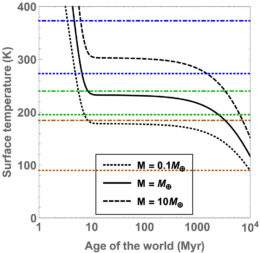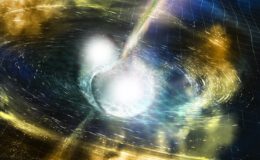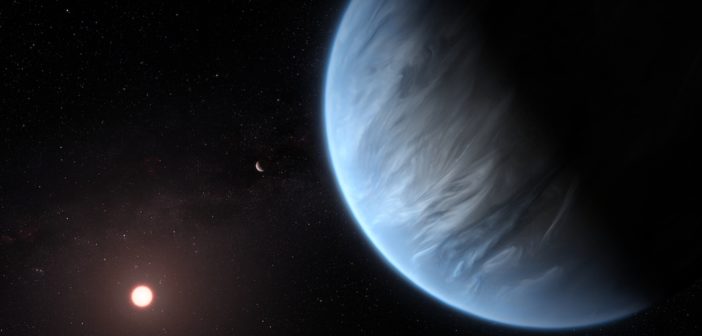Whether or not a planet lies in its star’s habitable zone is commonly used to gauge its ability to host life. But what about non-habitable-zone planets that have sources of heat besides starlight?
Warming Up in the Zone
A star’s traditional habitable zone marks the range of distances at which an orbiting planet receives enough heat from its star to host liquid water on its surface. Since water (or another liquid) is generally considered a necessary ingredient for life to arise and survive, stellar habitable zones represent convenient boundaries within which to search for life beyond our solar system.

Schematic showing how the traditional habitable zone’s location and width changes around different types of stars. [NASA]
Could the opposite be true as well, however? Could planets outside of a star’s habitable zone be capable of supporting life? A new study by scientists Manasvi Lingam (Harvard University; Florida Institute of Technology) and Abraham Loeb (Harvard University) explores this possibility.
Stars Aren’t Everything

Surface temperature as a function of age in Myr for a world with radioisotope abundances 1,000x that of Earth, for three different planet masses. The blue, green, and brown horizontal lines bound the temperature range in which liquid water, ammonia, and ethane can exist, respectively. [Lingam & Loeb 2020]
To be inclusive of life forms that may be different from Earth’s, Lingam and Loeb choose to explore three different liquids in their models: water, ammonia, and ethane. The authors investigate the radioactive heat flux from both long-lived and short-lived isotopes, as well as the typical heat flux released as a world cools after its formation.
Radioactive Worlds
Lingam and Loeb find that a rocky super-Earth with a tenuous atmosphere would need radioactive isotope abundances roughly 1,000 times higher than that of Earth to host long-lived water oceans without the help of starlight. Long-lived ethane oceans are easier to achieve, requiring only 100 times Earth’s radioisotope abundances.

Artist’s impression of the collision and merger of two neutron stars. [NSF/LIGO/Sonoma State University/A. Simonnet]
Since the number of planets outside of stellar habitable zones is likely orders of magnitude larger than the number inside them, the chance for life on non-habitable-zone worlds opens a wealth of possibilities. Keep an eye out in the future — the James Webb Space Telescope may be able to detect the infrared signatures of some of these internally heated worlds!
Citation
“On the Habitable Lifetime of Terrestrial Worlds with High Radionuclide Abundances,” Manasvi Lingam and Abraham Loeb 2020 ApJL 889 L20. doi:10.3847/2041-8213/ab68e5

5 Comments
Pingback: Vida fuera de la zona habitable – Observatori Astronòmic
Pingback: Vida fuera de la zona habitable « SEDA / LIADA - RedLIADA - Cursos LIADA - Cielo del Mes - Fenómenos Astronómicos - RELEA
Pingback: Vida fuera de la zona habitable | Sección de Exoplanetas - Planetas extrasolares / LIADA Liga Iberoamericana de Astronomía
Pingback: Marzo 2020 – Observatori Astronòmic
Pingback: Radiation Might Be the Key Ingredient for Extraterrestrial Life - Educational Videos